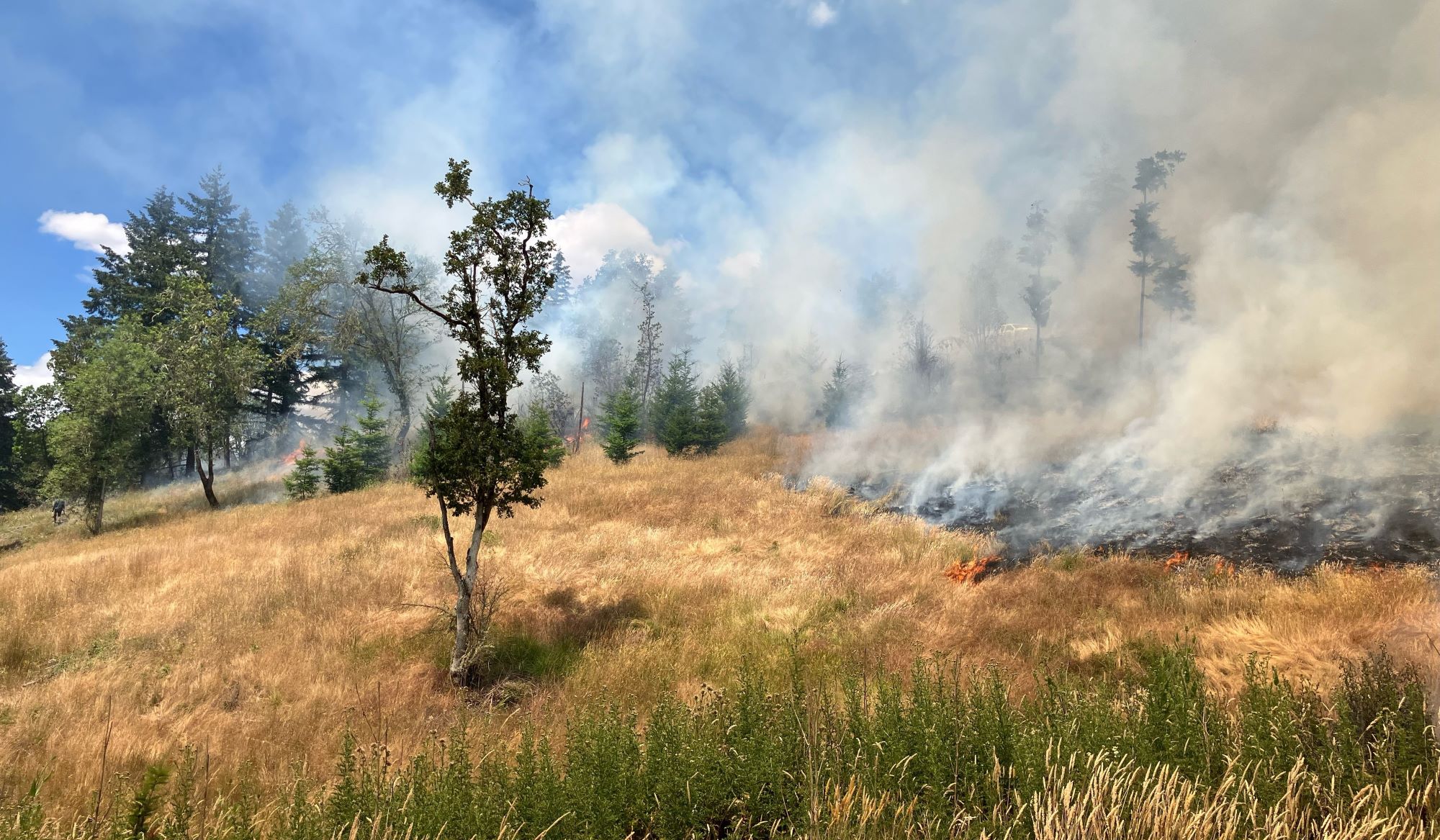
A cloud of thick, white, and gray smoke fills the air. Low flames cover the ground, consuming dry grasses and dead logs across the open field. The next day, the ground is charred and black, sparsely vegetated with ashy white and brown patches. For the newly formed Umpqua Prescribed Burn Association or UPBA, this is something to celebrate.
Csanyi Matusicky is a Habitat Conservation Specialist focused on supporting oak and prairie conservation in southwest Oregon and is helping launch the UPBA. Her work is part of a collaboration between Pheasants Forever, Pacific Birds, and the Natural Resources Conservation Service. It’s also part of a larger movement to bring good fire back to the landscape through innovative partnerships. This has rippling benefits for fire-adapted ecosystems like the Umpqua, improving habitat for native birds, insects, and other wildlife as well as creating a more fire-resilient community and landscape.
The Umpqua & Oaks
The Umpqua River Basin contains some of the largest remaining tracks of Oregon White Oak (Quercus garryana) forests and savannas in the Pacific Northwest. Oak and prairie habitats are among the Pacific Northwest’s most threatened habitats with estimates as low as 4-7% remaining (ODFW 2006). However, oak forests and prairies in the Basin are under the same human stresses found in other portions of Washington, Oregon, and California. Oak landscapes are a part of the Basin’s natural and cultural heritage. Umpqua Basin tribes were the original land stewards of oak habitats and the First Peoples of the Umpqua River Basin, including the Cow Creek Band of Umpqua Tribe of Indians, used fire and other methods to steward oak habitats providing tribal members with food, medicine, tools, home materials, decorations, and cultural needs.
Over the last 160 years, the landscape in the basin has changed, with many people choosing to live, farm, and recreate in the region. With the cessation of Native American burning and long-term fire suppression policies, much of the landscape has become dominated by less fire-resistant, often introduced woody vegetation and invasive species. Working with private landowners to advance restoration in the Basin, including prescribed fire, is bringing together agencies, NGOs, University Extension offices, and Tribes around shared strategies and resources.

The Umpqua Prescribed Burn Association
Organizing a prescribed burn is a complex process involving agency partners, paperwork, cooperative wind patterns, an understanding of land topography and fuel loads, and a little bit of luck. Since much of the remaining oak habitat is on private land, the first step is to connect with a landowner looking to participate in conservation. Next, the landowner needs to prepare the site for burning, which can take years. Once the land is ready, the prescribed burn can proceed. In the UPBA’s case, a Certified Burn Manager (CBM) will write an Oregon Department of Forestry Broadcast / Understory Burn Plan prior. These include detailed regulations that must be met for the prescribed burn to proceed, such as contacting nearby landowners, notifying fire dispatch, leading a safety briefing, and more.
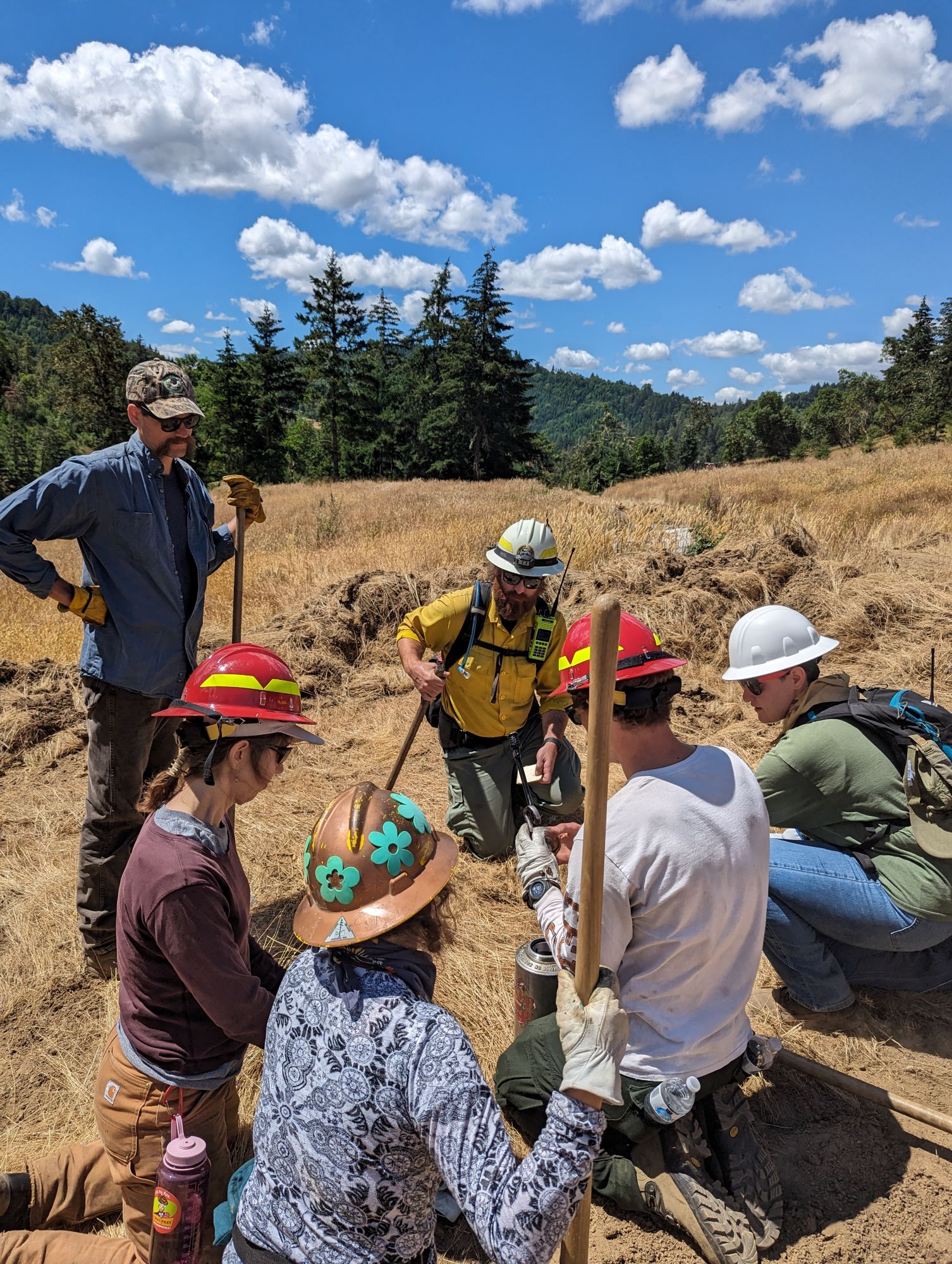
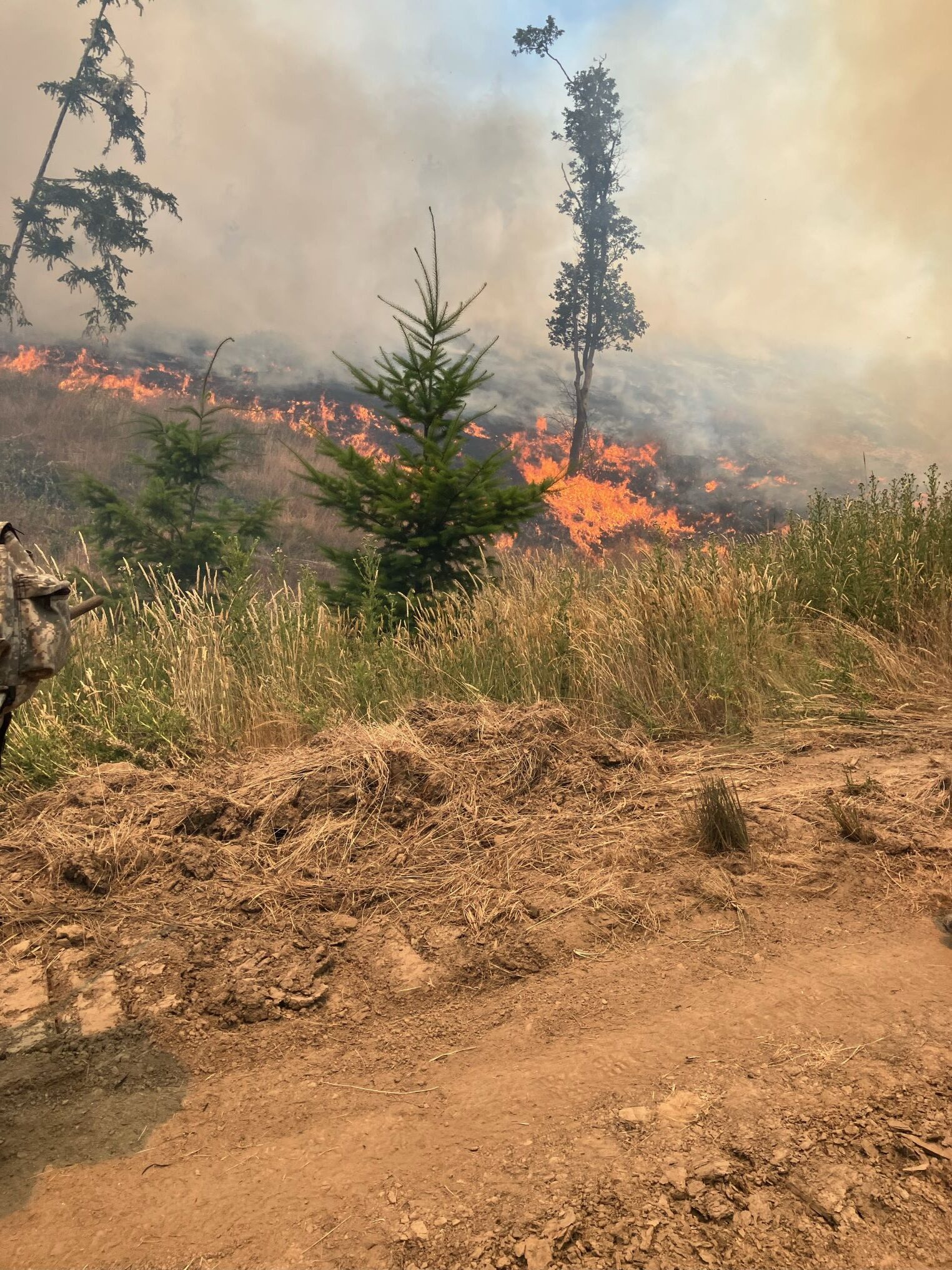
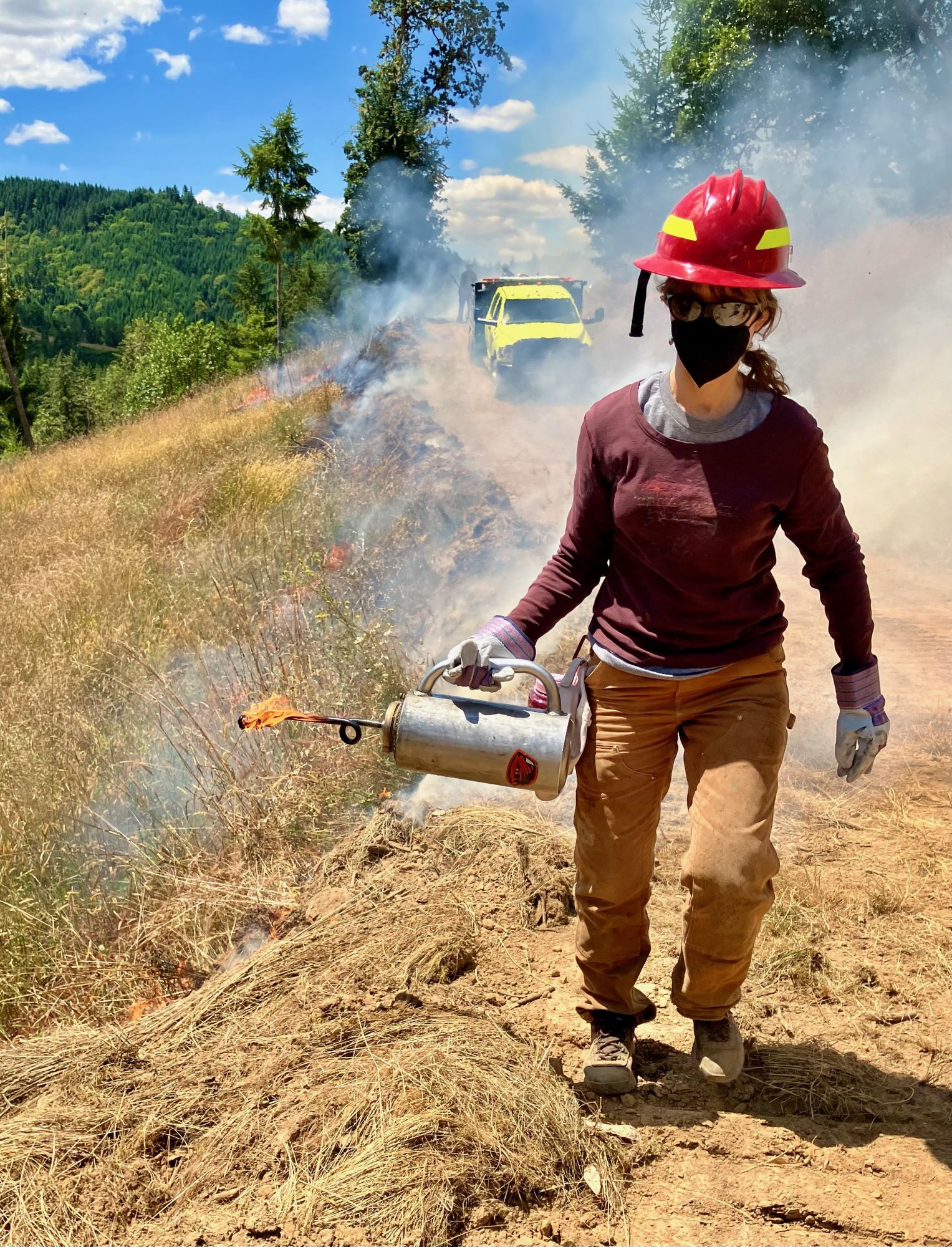
The Demonstration Burn
On July 1st, the UPBA led their first burn on a 9-acre plot of land in Douglas County, Oregon. The focus of this first burn was to get ahead of invasive species regrowth and to remove conifers, which can crowd out oaks. Another key goal was to provide training and experience to attendees who hadn’t participated in a burn before.
To begin, a test burn is ignited in a small patch at the highest point of the burn unit. They watch to make sure that the fire is behaving as they thought it would with the current weather conditions, but the most important factor is that the fire is controllable and safe, and once the team is sure of that, the burn can begin. As the fire burns, the team observes closely, following its movement and methodically igniting the remaining fuel. Being the first burn on this property, the team strived for a low-intensity burn to gradually introduce fire back into the system again and to clear out invasive grasses and shrubs.
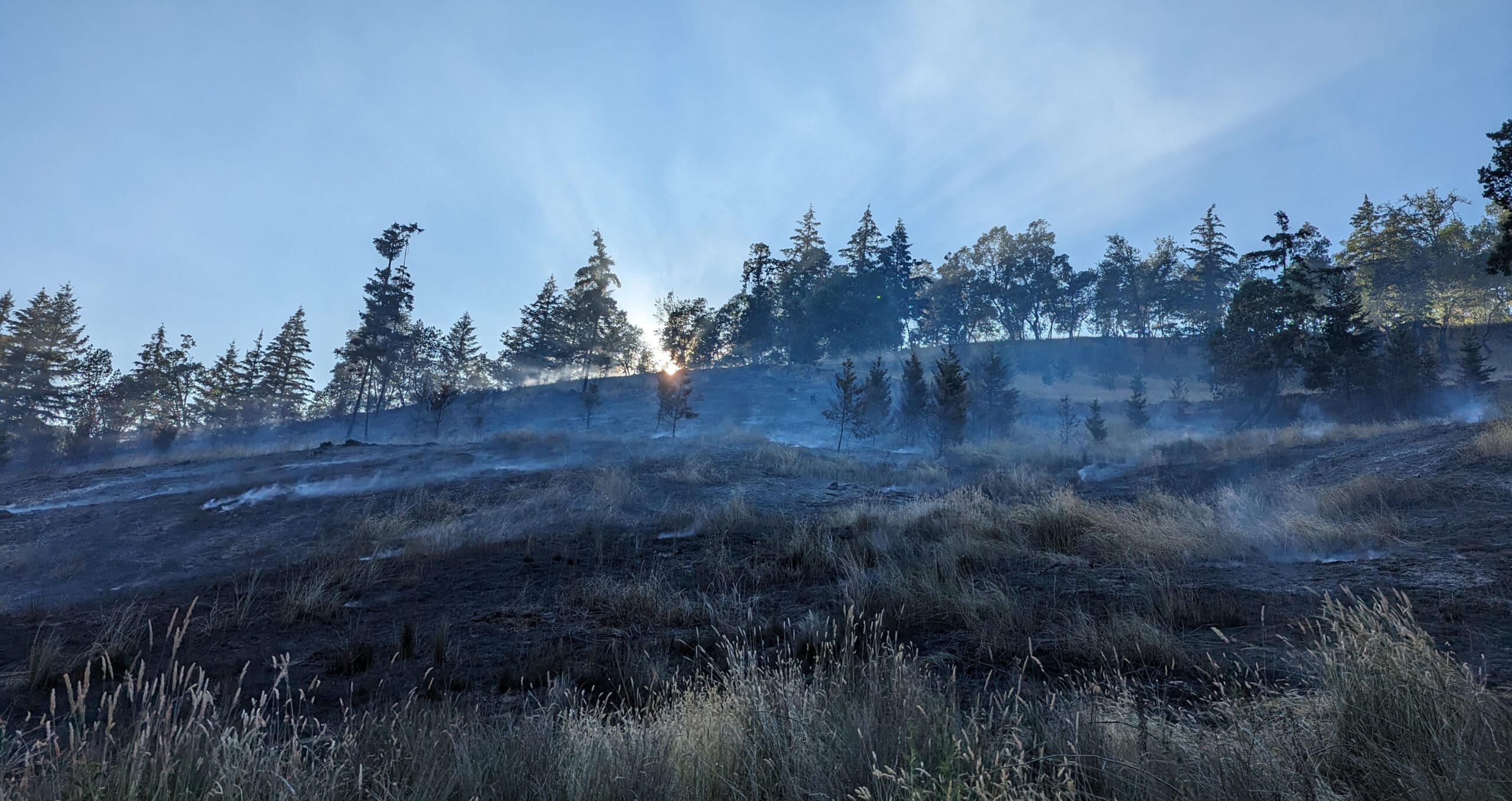
Mopping Up
By 8 PM the night of the burn, the field is still smoldering. A mosaic of ashy black and white earth and brown charred grass patches remains. Csanyi shared that despite looking patchy, this type of burn is good, as it helps promote biodiversity by creating a variety of conditions across the landscape. Depending on the time of year that a burn is conducted, the weather conditions during the burn, and the type of plants within the unit, this patchiness can be reduced or encouraged for different ecological purposes.
In the following days, she and many agencies and UPBA volunteers “mop up” – thoroughly checking for embers and hot spots. Hot spots are areas that are prone to holding heat underground after the flames are extinguished, slowly burning in the roots, soil, and duff. Despite there being no visible flames or smoke, when exposed to severe fire weather events or drastic winds, they can create embers that risk starting wildfires.
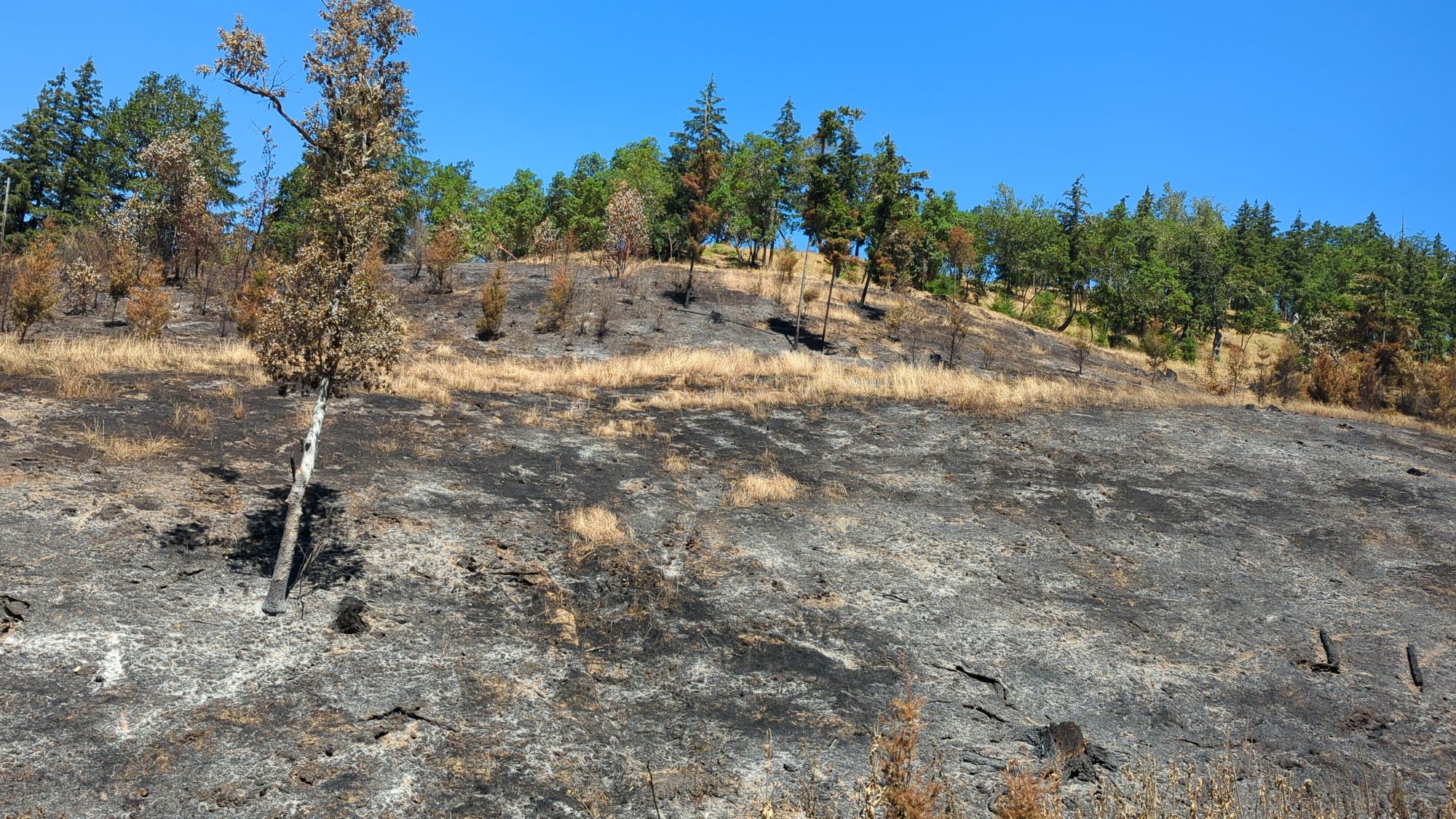
Fire as a Tool
This risk and the associated liability is a key barrier to prescribed burning for many landowners. One of the roles of the UPBA is to help people burn safely and successfully, while also connecting them to resources to fund projects and cover liability. Oregon Department of Forestry offers a Certified Burn Manager course to train new burn managers and offer a certain amount of liability coverage after they become certified. While a certain amount of experience is required for this program this program is open to landowners, agency employees, community members, etc. Csanyi also wants to expand the UPBA by working with the local community to identify burn projects that can keep their communities safe and restore the land.
The First Peoples of this region have long relied on oak trees and prairies for food and cultural practices, using fire to maintain and nurture habitats. Using fire as a tool can also reduce the likelihood and intensity of wildfires when they do occur, keeping people and property safe. And when used alongside other tools in our conservation toolbox, people, wildlife, and lands thrive.
If you or your organization is interested in learning more about the Umpqua Prescribed Burn Association or this work, please contact Csanyi Matusicky (cmatusicky@pheasantsforever.org or umpquapba@gmail.com)
